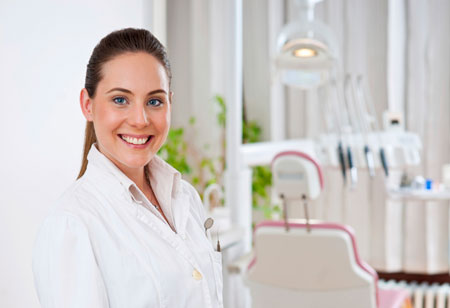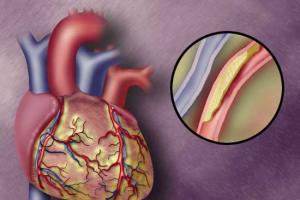There are many misconceptions about dental treatment in pregnant women. We refute the myths and give unequivocal answers to the questions: is it worth enduring pain, how dangerous is X-ray, and is it possible to treat teeth under anesthesia? We made notes for all procedures - from “forbidden” to “required”.
Dentist visits in every trimester of pregnancy
Necessary. Immunity during pregnancy decreases. And this is not surprising: a woman bears in herself a new organism, different from herself. What is changing from the point of view of the dentist? First, the risk of bone destruction increases. Secondly, there are changes in the work of the glands that produce saliva. The rate of saliva secretion decreases, its viscosity increases, the pH shifts to the acid side.
As a rule, calcium and magnesium deficiency occurs during pregnancy - this reduces the mineralizing ability of saliva. It ceases to perform a very important function: to wash the teeth, remove food debris, supply tooth enamel with minerals. The risk of gum disease and cavities is increased. Therefore, a pregnant woman should be responsible for brushing her teeth and regularly visit the dentist for professional cleaning, as well as prevention and treatment at the earliest stages.
Highly undesirable. Avoid any dental intervention (except professional hygiene) in the first and third trimesters: in the first, all organs and systems of the child are laid, in the third, the excitability of the uterus increases, so any irritants can lead to the risk of miscarriage or premature birth.
Can. The second trimester (this is about 14-20 weeks), when all the baby's systems are developing smoothly, is the safest for dental treatment.
Dental treatment under anesthesia
Can. If the treatment of the expectant mother is still necessary, preference is given to modern local anesthetics. They are hypoallergenic and well tolerated by the body. Such anesthetic injections do not penetrate the placental barrier and will not harm the baby.
Forbidden. Anesthesia with a high content of adrenaline. Such drugs have been used in clinics before, they could provoke muscle spasms. This is what both obstetrician-gynecologists and pregnant women themselves are afraid of, completely refusing any pain relief.
In most modern clinics, such compounds have not been used for a long time, however, in order to protect yourself, it is better to do this: at the time of the appointment with the doctor, explain that you are pregnant and that you cannot use anesthesia with a high content of adrenaline. At the dentist's appointment, again make sure the anesthesia is safe.
Highly undesirable. Surgical interventions in pregnant women at any time are carried out only for urgent indications. What are these indications? Injuries of the teeth and purulent-inflammatory processes in the oral cavity. All other operations can be considered planned and postponed until the postpartum period.
Is toothache worth it?
In no case! Many women still refuse any pain relief and endure pain. “So harmless to the baby,” they say. And it’s good if they still go to see a doctor - many simply suffer at home, use the most unthinkable home remedies, but never go to the dentist! The Internet is full of messages from such women who consider themselves almost heroines, because they endured severe pain, not wanting to harm their unborn child.
But in fact, it only gets worse: pain, especially severe and prolonged, disrupts the functions of internal organs and metabolism. And even that's not all! Pain has another aspect - psychological. A woman can be afraid of pain, worry about it, lose her temper, and commit rash acts. All this is not at all useful for the pregnant woman and the child. Excruciating pain is actually out of control of the central nervous system and can cause serious harm to the body.
By the way, why is the toothache so severe? The fact is that pain receptors are located in almost all tissues of the body (except for the nervous tissue of the brain and spinal cord). And the highest density of nerve fiber endings that fix pain is located on the border of dentin and tooth enamel.

X-ray during pregnancy
Only by strict indications! We quote the sanitary rules and norms (SanPiN): “The appointment of pregnant women for X-ray examination is carried out only according to clinical indications. Studies should, if possible, be carried out in the second half of pregnancy. This means that the dentist will send you for an x-ray only if there is a serious threat to the patient's health. Also, studies using a tomograph and a visiograph are not recommended - radiation exposure is still present, although it is less than with conventional x-rays.
Can. Is there an alternative? Now, in some clinics, DIAGNOcam is used for research - a modern device that allows you to take pictures of the crown (visible) part of the tooth without X-ray exposure. This will not replace X-ray 100%, but in many cases it will help to cure a pregnant patient. With DIAGNOcam, for example, caries can be detected at an early stage and treated in a minimally invasive manner.
Prevention of oral diseases before and during pregnancy
Necessary. Even at the stage of pregnancy planning, you need to visit a dentist. The doctor will conduct a complete sanitation of the oral cavity: examination, prevention and treatment. During pregnancy, the doctor will prescribe professional teeth cleaning - in each trimester or only twice (depending on the condition of the oral cavity).
Home care is also important. It includes the selection of the right toothpaste with a minimum content of lauryl sulfate (or without it at all), and the composition of the paste should also not contain mint oils.
It is useful to use remineralizing gels (sold in pharmacies). They help to reduce the sensitivity of the teeth, which may appear during pregnancy, will strengthen the hard tissues of the tooth and stabilize caries in the stain stage. Consultation on home prevention can be obtained at the appointment of a hygienist.
Author's article








